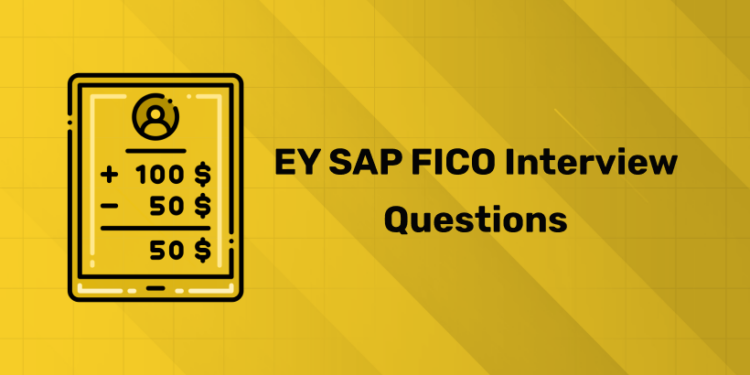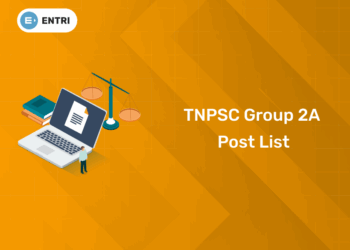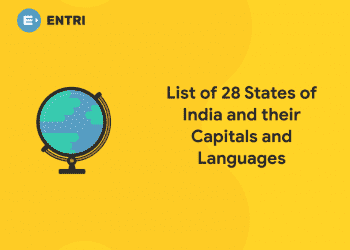Table of Contents
In EY you will have a chance to build a career in SAP Fico, with a global scale, support, inclusive culture and technology to become the best version of you. And we rely on your unique voice and perspective to help EY even better. Join us and create an exceptional experience for yourself and a better working world for all.
EY consulting is a fast -moving area with high growth with huge potential. Being a member of our counseling team means you specialize in specific competences – risk, technological counseling or IT risk and security. Our technological counseling team focuses on helping clients to improve the efficiency and safety of traffic and also reduce the costs and management of risk.
Join Entri’s SAP FICO Training Course today!!
Understanding EY’s SAP FICO Hiring Process
EY carries out 3 rounds for the selection of Fresher in their organization.
- Online assessment.
- Technical Interview.
- HR interview.
Online assessment
Online rating on EY generally consists of the following three sections:
- Aptitude: This part contains 30 questions.
- Logical and Verbal: This part also contains 30 questions. They will assess the logical reasoning of the candidate.
- Coding Questions: Two questions of medium difficulties. If you are good with data structures and algorithms, you are set up for this part.
Technical Interview
Candidates who successfully pass online evaluation switch to technical interviews to EY, usually performed on the HIREVIEW platform. This round usually includes 2 or 3 interviewers.
The number of technical interviews acquired completely depends on your performance in the previous rounds. In general, each candidate must go through one technical conversation during this process.
HR Interview
They ask HR questions like :
- Why should we hire you?
- Why EY?
- Tell me about a time when you worked effectively under pressure.
- What interests you most about this position?
Common EY SAP FICO Interview Questions
Basic knowledge of SAP Fico regarding its use, elements, code, surgery and important conditions are a necessity for refreshrs. This is followed by some of the most commonly asked SAP Fico interview questions.
1. What do you understand by the term SAP FICO?
SAP is the abbreviation for Systems, Applications & Products in Data Processing. The FI in FICO stands for (Financial Accounting), and CO is for (Controlling). Thus, SAP FICO is a combination of SAP FI and SAP CO. While SAP FI deals with accounting, tax computation, and preparation of financial statements, SAP CO is for inner orders, inventory sheets, cost sheets, cost allocations, and more.
2. What is the posting key? What purpose does it serve?
A two-digit numerical for controlling and determining the transaction type documented in the line item is referred to as a posting key. It helps determine the following:
- Account types
- Types of posting: debit or credit
- Field status of a transaction
3. What is the main usage of SAP FICO?
SAP FICO is the software used for storing and computing data. It helps retrieve the result according to the latest marketing scenario. It prevents data loss and is responsible for the reporting and verification of data. Its modules allow companies to manage financial tasks within an international framework of currencies and languages.
4. What are the other modules into which ‘Financial Accounting’ of SAP FICO is integrated?
The other modules to which ‘Financial Accounting’ of SAP FICO is integrated are:
- Sales and Distribution
- Production Planning
- Material Management
- Human Resource
- Controlling financial transaction
5. State the most important organizational elements in SAP FI.
The important organizational elements in SAP FI are as follows:
- Functional Area
- Business Area
- Company Code
- Chart of Account
6. What is the best way to manage transactions from different business lines within a company?
The best way is to create Business Areas. You can also create different company codes for each business line to manage transactions from different business lines within a company.
7. What are the options for fiscal years in SAP FICO?
A fiscal year is a way to hold the financial data in the system. In SAP FICO, there are twelve posting periods and four special periods. You must specify the fiscal year variant for every company code. Also, when creating a controlling area, you will have to specify the fiscal year variant.
8. What is the role of credit control?
Credit control helps guard a business against overstretching its financial assets. Usually, a credit limit is set for the customers using SAP when a payment is made post the product’s sale. This method allows you to restrict the customer’s amount to clear before starting a fresh purchase.
It is suitable for credit management in application components:
- Account Receivable (AR)
- Sales and Distribution
9. What is the function of the company code in SAP FICO?
The company code is responsible for generating financial statements like Profit and Loss Statements, Balance sheets, and others.
10. How many Chart of Accounts can a company code have?
There can be only one Chart of Accounts for an assigned company code.
11. How many currencies can you configure for a Company Code?
You can configure three currencies for a Company Code, including
- One local currency
- Two parallel currencies
12. What is the role of the Chart of Accounts in SAP FICO?
The Chart of Accounts is used to meet the company’s daily needs and the country’s legal requirements. Its two types are as follows:
- Operating Chart of Accounts (COA): A record with all the general ledger accounts assigned to the company code.
- Country Chart of Accounts (COA): The list of general ledger accounts needed to meet the country’s legal requirements.
13. What do you understand about the field status group and field status variant?
The field status groups contain the field status variants. The General Ledger account has field status groups. These status groups allow you to define the fields when posting to the general ledger.
14. What is the year shift in the SAP calendar?
The SAP system only understands the calendar year. It fails to acknowledge a broken fiscal year. Suppose for a business a fiscal year is not a calendar year but a combination of the different months of two different calendar years. Then, one of the calendar years needs to be classified as a fiscal year, and the months that fall in another year should be adjusted into the fiscal year by shifting the year by using the sign -1 or +1. This shift is termed a year shift.
15. State the types of modules into which FI is integrated.
The different types of modules are:
- Production Planning
- Material Management
- Human Resource
- Sales and Distribution
16. How are output and input taxes managed in SAP FICO?
SAP FICO has tax codes within tax procedures for every country. You get the facility to expense out the tax amounts or capitalize them to stocks.
17. What are validations and substitutions in SAP FICO?
Validations in the FI and CO modules help ensure data integrity when entering actual transactions online or in a batch. The substitutions in the FI / CO / EC modules help derive or correct values that are passed via integration or submitted to the FI / CO modules.
18. Which application areas use validation and substitutions?
Validation and substitution are used by the following application areas in SAP:
- FI- Financial Accounting
- CO- Cost accounting
- GL- Special purpose ledger
- AM- Asset accounting
- PS- Project system
- PC- Profit center accounting
- CS- Consolidation
- RE- Real estate
19. What is a year-dependent fiscal year variant?
When the number of days in a month does not correspond to the calendar month, it is a year-dependent fiscal year variant. For instance, when January ends on the 30th and February on the 27th.
20. What steps are involved in G/L posting?
On completion of the payroll run, the results are to be added to the G/L accounts. GL posting involves the following steps:
- Grouping relevant information from the payroll results.
- Creating summarized documents.
- Performing the necessary postings to appropriate cost centers and G/L accounts.
21. What are the different methods for making vendor payments?
The two methods are:
- Manual Payment: Done without a medium such as cheques.
- Automatic Payment: Done through DME (Data Medium Exchange) like wire transfer or cheque.
22. What is the use of FSV (Financial Statement Version) in SAP FICO?
FSV is a reporting tool. It helps extract final accounts from SAP like Balance Sheets and Profit and Loss Accounts. Using multiple FSVs, you can generate the output of various external agencies like banks and other statutory authorities.
23. At what level the Customer and Vendor codes are stored in SAP?
The Customer and Vendor codes are stored at the client level. A company code can use the vendor and customer code by extending the company code view.
24. What is the significance of financial statements within a business in SAP FICO?
A financial statement helps manage the company’s financial assets. Creating and managing financial statements and records allows you to create data that you can use later to plan further or decide on investments for the company.
25. State the common G/L reports in SAP FI.
The most common G/L reports in SAP FI are as follows:
- G/L Chart of Accounts List
- G/L Account List
- G/L Account Balances
- G/L Account Totals and Balances
Master SAP with Expert-Led Courses
Unlock your potential with our comprehensive SAP courses! Learn essential modules like SAP MM (Materials Management), SAP SD (Sales and Distribution), and SAP FICO (Financial Accounting and Controlling) from industry experts.
Know MoreHow To Prepare for EY SAP FICO Interview
To prepare for an EY SAP FICO interview, thoroughly review your SAP FICO knowledge, particularly in areas relevant to the job description, practice answering common technical and behavioral questions, research EY’s SAP practice, and consider doing mock interviews to refine your responses and presentation skills.
Key areas to focus on:
Technical Skills:
- Core FICO Modules:
Deep understanding of the main book (g/l), receivables (A/R), payable accounts (A/P) and assembly of assets including configuration, data management, rules of publication and document types.
- Integration with Other Modules:
Knowing how Fico interacts with other SAP modules such as sale and distribution (SD), management management (MM) and production planning (PP).
- Reporting and Analysis:
Expert knowledge in creating and adapting standard SAP messages using SAP Business Warehouse (BW) for data analysis and understanding key financial metrics.
- New Features in S/4HANA:
Knowing the latest Fico features in SAP S/4HANA, including new accounting standards and simplifying features.
Specific EY Considerations:
- Industry Focus:
Understand that the EY industry usually serves and how SAP Fico is used in these sectors (eg healthcare, retail, production).
- Consulting Approach:
Meet the EY consultation methodology and how they approach SAP Fico implementation projects.
Behavioral Questions:
- Problem-solving:
Be prepared to describe situations where you had to solve the complex problems of SAP Fico and how you solved them.
- Teamwork:
Emphasize examples of collaboration with the intermediate teams during SAP implementations.
- Communication Skills:
Demonstrate your ability to clearly explain technical concepts to non -technical parties.
Preparation Strategy:
- Review Job Description:
Carefully analyze the publication of jobs to identify key skills and experience.
- Refresh SAP Knowledge:
Go through the relevant SAP Fico documentation, online tutorials and exercises to strengthen your understanding
- Practice Mock Interviews:
Perform false conversations with colleagues or use online platforms to simulate real interview scenarios.
- Research EY:
You will learn about EY’s SAP Practice, their client base and corporate culture.
- Prepare Questions to Ask:
Develop thoughtful questions to ask the interviewer and show your interest in the role and EY.
Join to learn SAP FICO from the Experts! Click for the demo class!
Tips for Cracking EY’s SAP FICO Interview
Good preparation will help you play well during the conversation. Similarly, some post-interview activities, such as informing about your judges and HR tracking, also increase your chances of success. Follow these instructions to find out how to break a job interview and excel from other candidates:
1. Review the job description
Check the description of the task and understand the types of skills and qualifications that the employer expects to have. It would also give you an idea of the duties and obligations that work communicates. This information would help you adapt your CV for this position and prepare for the questions that the interviewer can ask. Try to analyze your strengths and weaknesses towards those who demanded that the work decides how you are obliged to approach the interview.
2. Research the company
Most employers prefer hiring candidates who have good knowledge of the company. You can start your research on the company’s website and its accounts on social media and learn about its mission, business and work culture. You may also want to go through reviews of employees on third -party websites to get an insight into the experience of your employees. Knowing more about the company and the interviewer would help you align your reaction with corporate culture and values. If possible, try to learn more about the interviewer on professional network platforms to get acquainted with their personality and temperament.
3. Revise your CV
Once you get enough insight into position and society, adapt your CV to match work and society. Stress your skills and strengths that the employer explicitly specified. Pick up some prominent keywords from the description of the company’s task and profile and use them in your CV. Make sure the information you provide is real and honest.
4. Practice your answers
Renew your knowledge of the subject and prepare for tests that may be part of the interview. The organization of your ideas would help you express yourself in an impressive way. Think about questions that the interviewer may ask and how you would respond to them. Look for common interview questions based on work profile, company and experience level.
5. Be on time
Plan your travel to achieve the interview at least 15 minutes before the planned time. Prematurely you will appear on the conversation that you appreciate time. It also gives you time to relax and refresh, especially after a long, tiring journey. Use the position map sent by the company or walk through the Google Maps to get to know the route. Check the destination displayed using the GPS device and pre -arrange the method of transport.
6. Follow the proper dress code
If there is a specific dressing code in the description of the job or letter of the interview, make sure you dress appropriately. In the absence of such instructions, you must participate in a job interview in formal clothing. If you use perfume, deodorant or hair gel, make sure it is mild. Maintaining clothes and accessories (shoes, socks, belt, tie) prepared night before the conversation can prevent unexpected problems on the day of the interview.
7. Carry the required documents and devices
Take the required documents and equipment Be sure to transmit all basic documents, including your CV, cover letter, reference letters, academic certificates and salaries from previous employment, if possible. Stalely arrange them in a file or folder. Keep the pen and paper on hand so that you do not require them to borrow them during the conversation. If you need a laptop or tablet to show your work or perform a presentation, make sure they wear it.
8. Present yourself well
Presenting yourself well It is useful if you start to behave professionally as soon as you get to the venue, and you deal politely with all you meet. If the security person asks you, enter your information in the registry. You are usually obliged to send your resume to the reception and follow their instructions. Try to be patient while waiting at the reception and keep your interaction with other candidates minimal. It is good to turn off your cell phone or keep it in quiet or vibration mode. If you think it is inevitable to call, talk to a low voice.
9. Speak clearly
Speak clearly Providing a cheerful greeting, when you meet the interviewer, creates a favorable atmosphere. Try to speak with a constant pace and a clear voice. Let the information appear in the natural flow instead of rushing to get everything you know in one breath. If you don’t know anything, be honest. If you need a minute or two to think, you can ask for it. Being honest and having a good clarity of thinking would place you in a stronger position than other candidates.
10. Listen patiently
Listen patiently Active listening is an essential skill with a promising candidate. Try to be attentive and carefully listen to the interviewer. Employers consider this to be good professional ethics when you avoid interruption of conversation in a formal environment. Before answering them, understand questions and other details. More information provided by the interviewer may sometimes prove to be useful in answering the questions they can ask in the interview. Observation as the interviewer responds to your answers can help you fine -tune your answers to other questions.
11. Highlight your skills and achievements
Try to emphasize your skills and achievements that would help you stand out in a new job. Little preparation can help you tie each of your answers to one or the other skill or quality in some way. If you get a question as “What are your strengths?” Or “Why are you looking for a change?”, take this opportunity to explain why you are appropriate for the job. Do not forget to answer in a confident and informative way in a modest and modest tone.
12. Use positive body language
Use a positive body language Your body language tells a lot about your attitude and level of trust. For example, the tendency or shaking of the legs may indicate that you are nervous. On the other hand, too informally sitting in a carefree posture can be interpreted as a lack of the right office etiquette. Try to look professional and folded without looking too informal or too confident. Some examples of positive body language include straight, showing optimistic expressions and direct eye contact with the interviewer.
13. Be precise and focused
Be accurate and concentrated Interviewers usually have a busy program and rarely have time for lengthy answers. They appreciate sharp and focused reactions. Therefore, keep your answers short and direct. At the same time, be sure to include all basic information. Adapt your answers based on their specific questions and other information that you get during the interview. Whenever needed, talk positively about your previous and current employers. Try to assess the mood and personality of the interviewer and adapt accordingly.
Join to learn SAP FICO from the Experts! Click for the demo class!
Conclusion
If you take part in an interview for work in the financial industry, the employer can ask your understanding of the modules of systems, applications and products (SAP) like SAP Fico. Thanks to the work knowledge of financial accounting (FI) and control (CO) modules, you can confidently approach the duties of financial reporting and minimize the loss of data within the company’s records. Preparing answers to potential interview questions on this topic can help you provide you with thoughtful, complex answers and improve your candidacy.
Master SAP with Expert-Led Courses
Unlock your potential with our comprehensive SAP courses! Learn essential modules like SAP MM (Materials Management), SAP SD (Sales and Distribution), and SAP FICO (Financial Accounting and Controlling) from industry experts.
Know MoreFrequently Asked Questions
What should I do to prepare for the EY Interview?
What types of questions are asked during an EY Interview?
Some popular EY Interview questions include: Why do you want to work at EY? Why should we employ you? Do you love conducting your own research? What are your strong points and weak points?
How many rounds of the EY Interview are there?
In general, the EY Interview process consists of three rounds that might last up to two months













